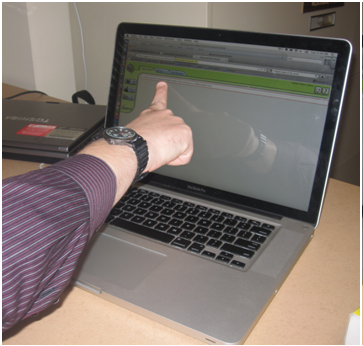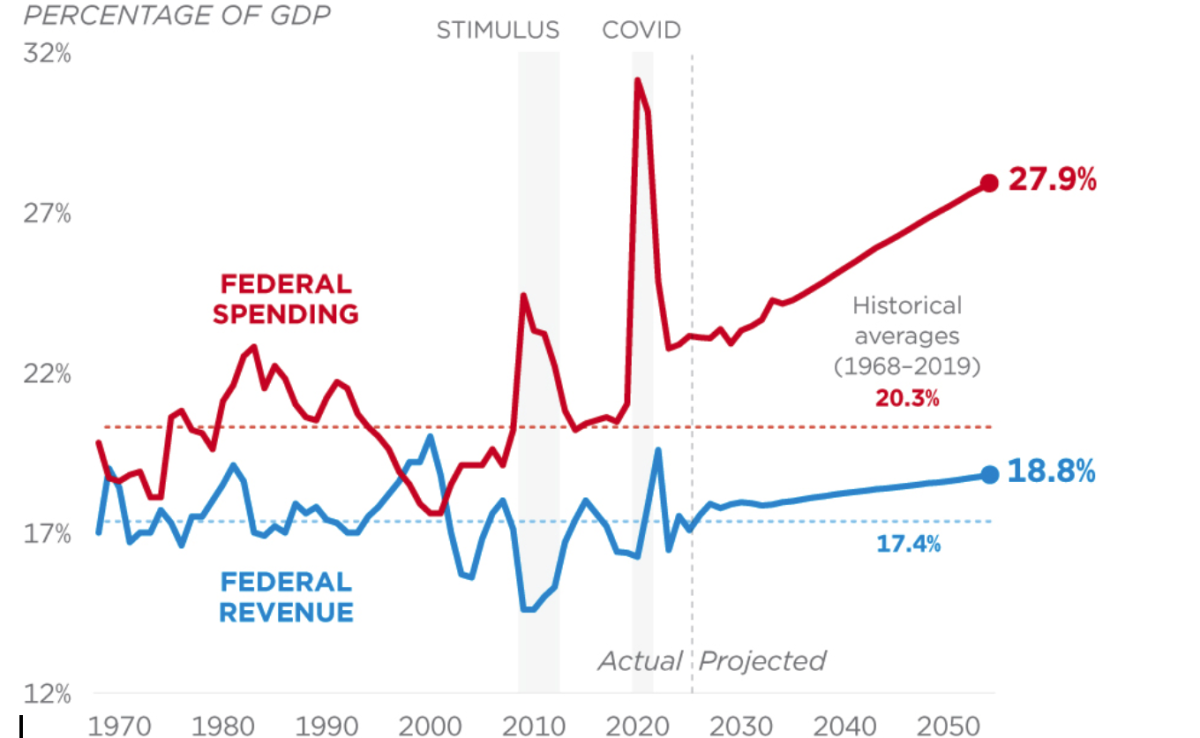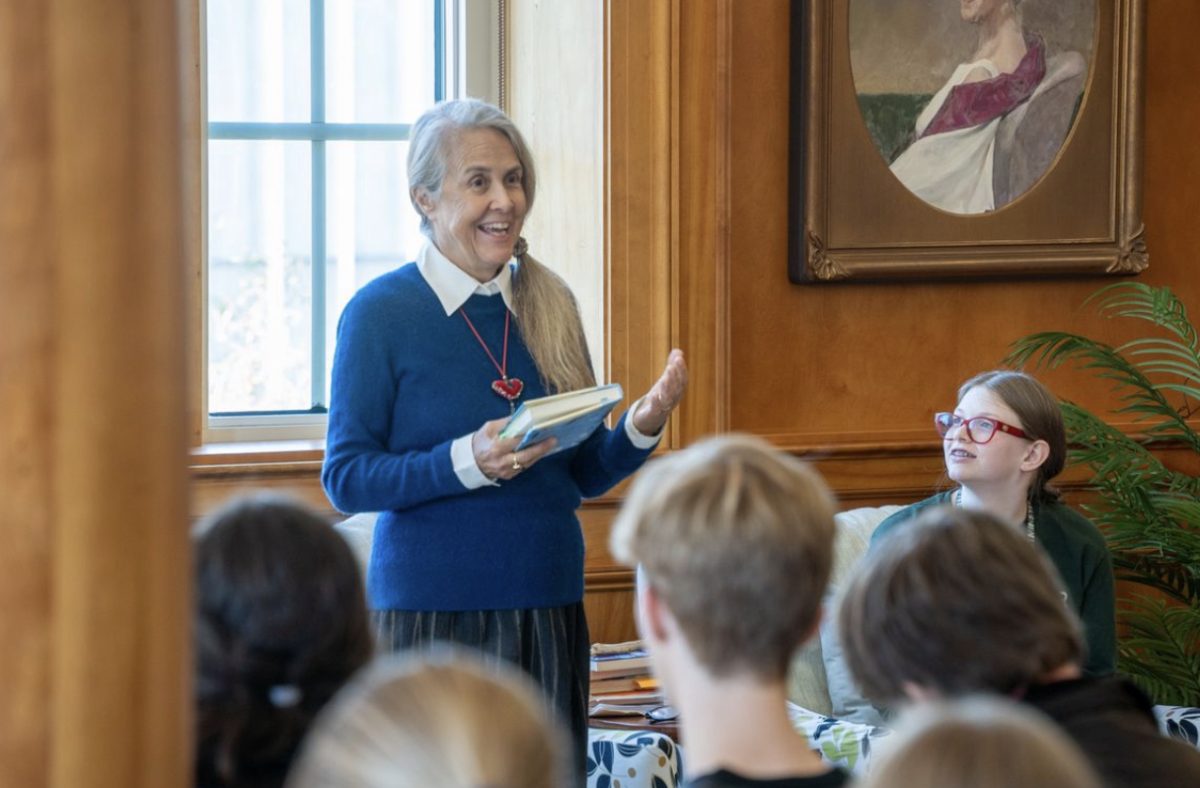“Action and reaction, ebb and flow, trial and error, change — this is the rhythm of living. Out of our over-confidence, fear; out of our fear, clearer vision, fresh hope. And out of hope, progress.” -Bruce Barton.
During a time of great transition at Westminster, technology has risen as an agent of change. In a move that exemplifies that change, every student at Westminster from the fifth grade and up will be effectively armed with some form of a portable technological device by the fall of 2012. This forthcoming 1:1 MacBook rollout is part of a larger effort to integrate technology into Westminster. The Bi-Line conducted a poll to assess student response to the initiative, and the results indicated mixed opinions, with many contradicting the apprehension felt by the the student body for this year: 61 percent of students believe that new technology in the classroom enhances student learning.
A further breakdown of the survey results show trends among gender and class regarding the increased presence of technology on campus. For instance, 41.1 percent of males describe themselves as “very tech savvy” compared to the other13.9 percent of females.
All of the students in the high school that completed the survey use Schoology, Moodle, Webassign, Google Docs, or Smartboard in at least one of their classes. On average, the freshmen use more of these programs than any other class.
The emphasis on technology belongs to the school’s most recent Learning for Life vision statement, a document produced in the spring 2011 by the education committee of the Board of Trustees. The vision statement outlines Westminster’s overall objectives of promoting lifelong learning and endowing students with the following five pairs of skills: communication and collaboration; problem-finding and problem-solving; creativity and innovation; reflection and revision; serving and leading. The vision statement addresses how to mold learning to a changing world and how to best prepare students for the challenges and opportunities of the 21st century. Also documented in the vision statement are “essential actions” to take in order to achieve the goals—employing technology in the classroom, among them.
“[The] school wants to provide an educational approach that optimizes [students’] ability to do those ten things, with technology being a tool aiding the process,” said Assistant Headmaster for Academic Affairs, Jere Wells. “[Technology] is not a device in and of itself. This is not the magic pill, the magic bullet, the magic anything. It is part of an overall conversation about how to improve education in a rapidly changing world, where the expectations [for students] change, and where the resources that are available to help educate [students] change rapidly.”
While a faculty group was working on the vision statement, a separate committee conducted research on technology integration in a school environment. Headed by physics teacher, and now new co-dean of instructional technology, Juliet Allan, the committee was set up by President Bill Clarkson, who had commissioned Allan to chair the committee in January 2011. The purpose of this committee was to consider technology issues for the school and to research how technology can support teaching and learning. While working on the sidelines, the technology committee reached similar conclusions as the team working on the Vision Statement.
“We realized we were not separate initiatives, and that there isn’t a divide between the goals of the education committee and those of the technology committee,” said Allan. “It’s not a technology initiative, it’s an education initiative.”
The technology committee conducted research for four months, visiting schools with various levels of technology systems already in place. Lovett, Pace, Wesleyan, Paidaiea, among other local peer schools, as well as schools around the country were studied to see how technology had been integrated.
“They were very different from us. I was really impressed with the level of student engagement and student initiative,” said Allan. “Kids were doing different things. There were so many avenues for creativity, and more independent research.”
Once all the research was compiled, the technology committee presented it to the Board in April 2011. The board voted to have the school undergo the technology upgrade.
“I think the vision statement is going to move from a sit-and-get model to create-and-participate model. [Additionally], students can’t leave here having had a vastly different learning experience, just because of how their schedules turned out,” said Dean of Faculty, Thad Persons. “We hope technology, among other tools, will help to standardize learning, but not standardize teaching. It should matter what teacher you get, you’re still going to get these skills.”
With 34.6 percent of the students disagreeing that their teachers know how to use technology effectively, there may be some additional factors to consider regarding complete integration.
“For some teachers who are technologically inept, due to no real fault of their own, [trying to employ technology in the classroom] would create a large burden for the class,” said junior Henry Quillian. “Time [is] wasted trying to accommodate lectures to include technological aids or formats when they are most effective without them.”
Teachers have been training to increase their comfort levels using technology in the classroom.
“There is a group of three teachers called CTIFS—chief technology integration specialists,” said Wells. “They are Chris Harrow for the high school, Jill Gough for the junior high, and Marlene Getzendanner for the elementary school.”
Additionally, the school recently hired Colleen Glaude, who will be serving as dean of instructional technology along with Allan, beginning in January 2012.
Meanwhile, the new Tuesday B schedule, created in part to allot time for faculty to meet, is also a resource for teachers to learn about technology integration.
“For half of the Tuesday B’s, we have a professional development meeting with our department only. We try to figure out how we as a department implement technology,” said Bible teacher Ralph Geeza. “The biggest things that we as a department plan to focus on for the rest of the year are Schoology and Google docs. Schoology has taken the place of Moodle, which many of us have used in the past.”
As Schoology has become more prevalent than Moodle, shifts of usage have occurred. 84.3 percent of freshman currently uses Schoology, while only 22.4 percent use Moodle, compared to the 61.5 percent of seniors who use the older Moodle program.What technology and programs will be used in the years to come will vary based on many factors.
“[Technology in the classroom] can have so many different forms, and it completely depends on what the teacher’s goals are,” said Allan. “As a science teacher, I want my students to analyze their own data when doing a lab, without the actual analysis taking the entire period. [Letting] the technology do its job will give students more time to study graphs or do research pertaining to the lab.”
There are other acknowledged concerns about the upcoming and current technology implementation.
“Technology is fire—it can heat our food or burn a house down. Technology can make us so connected that we want to disconnect, “said Persons. “It can also isolate us in a lot of ways, but I think teachers are wise enough to determine when to tell students to open up and close the computers.”
Teachers are certainly experimenting to see what methods work.
“When should we disconnect? When should we connect to the machine, and when should we connect to each other?” posed Matheson. “Should we do more stuff with technology outside of class so that when we come together, we can take advantage of the physical time together so we can connect and develop our relationships in the learning process? Or should we bring the computers in?”
Students similarly wonder about classroom dynamics.
“The idea of integrating new technology is exciting and fun, but not when it sucks all of the community out of the classroom,” said senior Ryan Heazel. “I can remember an instance this year when my English class spent a whole hour discussing a poem… on a Google doc. We sat in silence and commented on poems using our laptops, not actually addressing each other.”
Others wonder about personal laptops. Seniors use personal laptops most often, with 41.5 percent of them using one every day.
“[We haven’t been] asked if we think being forced to rent a Mac when we already own one is fair at all,” said Quillian.
Problems with an increased use technology are not limited to communication issues. Students are oftentimes unable to access their U drives, teachers’ new Macbooks aren’t compatible with the Smartboards, and the network is often slowed due to the number of teachers on it, thus interfering with class time. 30.7 percent of students said that they were seriously inconvenienced by technological problems about once a week. Furthermore, while zero percent of students said they were technologically inept, 56 percent of all students polled said they had used technology as an excuse for late or incomplete work.
In preparation for the upcoming 1:1 next year, the school has made many changes to its technology infrastructure to prevent any foreseeable problems.
“We’re getting more bandwidth coming into the school. There is also all new fiber optic cables within the buildings and between them. Both will both prevent clogging in the network,” said Allan.
“The internet currently comes from the back gate, but next year, it will be coming in from the front, so if a tree falls near the back gate, we still have internet. We are also moving our data backup offsite, so if there’s a power outage, then we can operate off of those backup servers, which will be in a completely different location.”
Yet, there are still 38 percent of students who do not believe that increased use of technology in the classroom will enhance student learning. The most disagreement with use of technology in the classroom came from seniors, 11.4 percent of which strongly disagree that technology in the classroom helps student learning. In contrast, only 2.4 percent of freshmen strongly disagree that it enhances learning. This discrepency might suggest the freshmen class is more willing to rethink its methods of learning, having been exposed to technology in the classroom back in junior high.
At the same time, 47 percent of those polled admit not fully understanding the purpose of the technological changes at Westminster. Another difference between classes, 76.4 percent of freshman answered that they understood the purpose behind the technological changes, while only 36.8 percent of seniors said they understood. The percentage of understanding decreases with older classes.
Only time will tell how the school’s learning culture will be shaped by these recent changes.
“I think the role of a teacher will diminish, [and] I hope that the teacher doesn’t just become the force that assigns homework and writes tests. I always feel like in a class where we’re using computers, the screen creates a literal and figurative barrier between the students and the teachers,” said senior Caroline James. “There are certainly some fantastic things you can do with computers, but when students have them 24/7 in the classroom, they (and teachers) will feel obligated to use them all the time, when sometimes the best learning comes from simple pen and paper or discussion.”
“The technology is but a part, an important part, a high potential part, of an overall educational philosophy,” said Wells. “This is not about being a high tech school—it’s about being a school that can use high tech tools in the service of students to achieve the optimal education.”






